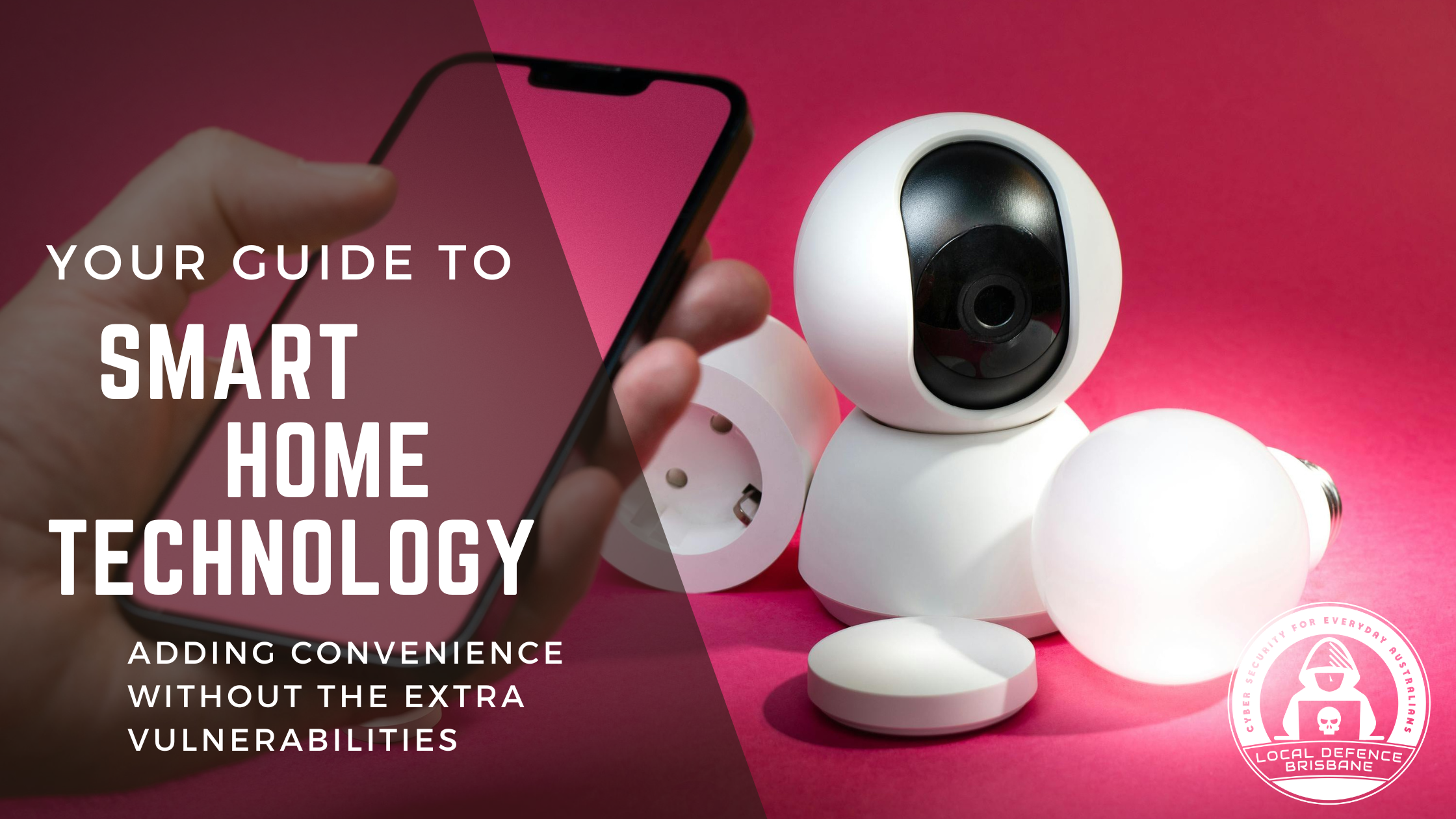Smart (Safe) Home Security
Don't Let Convenience Compromise Your Safety
The allure of a smart home, where lights respond to voice commands and thermostats adjust themselves, is undeniable. But behind this futuristic façade lies potential security vulnerabilities that could expose your personal data and even compromise your physical safety.
If you’ve been keeping up with any technology trend over the past decade, you’ve probably heard of the ‘Internet of Things’ (IoT). For those who haven’t, IoT is the addition of computing technology in everyday items which allows them to communicate via a network such as the internet. In simpler terms: a lot more devices than just laptops and phones are now connected to the internet. Some of these things are still quite trivial, for example I still struggle to see much value in my refrigerator and dishwasher connecting to the internet. However; my baby monitor, security cameras and television are good examples of smart home technology I use daily to enhance my quality of life through convenience.
It’s important to understand that whilst these interconnected devices can provide convenience, it comes at the cost of more vulnerabilities in your home network.
Understanding the Threats
Hacking and Data Breaches: Weak passwords, unpatched software, and insecure connections can allow hackers to infiltrate your network, steal sensitive information, or even spy on you through cameras and microphones.
DDoS Attacks: Directed Denial of Service (DDoS) attacks involve flooding a receiving device with a large number of messages to prevent it from performing it’s role, for example it could turn off your security camera.
Identity Theft: The personal data collected by smart devices, such as names, addresses, and financial information, can be exploited by criminals for identity theft and fraud.
Physical Safety Risks: Compromised smart locks, alarms, or surveillance systems could leave your home vulnerable to intruders.
Safeguarding Your Smart Home
Strong and Unique Passwords: Change default passwords to complex, long and unique ones for each device and your Wi-Fi network. Consider using a password manager such as NordPass or LastPass to securely store your credentials.
Regular Updates: Unfortunately, a lot of smart home devices don’t have the security patch upkeep that devices like the latest mobile phones have. But keep a lookout for firmware and software updates to patch vulnerabilities and protect against the latest threats. Enable automatic updates whenever possible.
Secure Wi-Fi Network: Use a strong password and WPA3 encryption for your Wi-Fi network. Consider hiding your network's SSID to make it less visible to potential attackers.
Network Segmentation: Map out your home network, even draw it on paper or print out the diagram from your router, list all of the smart home devices in your house. Create separate networks for IoT devices and your main network. This prevents a compromised device from accessing sensitive data on your primary network.
Firewall and Intrusion Detection: Consider using a firewall to monitor network traffic and an intrusion detection system (IDS) to alert you of suspicious activity.
Research and Reputable Brands: Choose smart devices from reputable brands with a proven track record of security and privacy. Read reviews and research vulnerabilities before purchasing.
Privacy Settings: Be mindful of the data your smart devices collect. Review privacy settings and disable features you don't need.
Physical Security: Secure your Wi-Fi router and any smart hubs in a location where they are difficult to access. Consider physical security measures like smart locks and alarms and understand the risks associated with such devices.
Stay Informed: Keep abreast of the latest cybersecurity news and threats, as your device may be listed as having known vulnerabilities, if authorities are aware, cybercriminals are definitely aware!
Taking Control of Your Smart Home Security
By taking these proactive measures, you can enjoy the benefits of a smart home without compromising your security or privacy. Remember, cybersecurity is not a one-time event; it's an ongoing process. By staying informed and vigilant, you can create a smart home that is both convenient and secure.
Additional Tips:
Consider a cyber security audit of your smart home with a specialist to identify vulnerabilities.
Use a VPN to encrypt your internet traffic and protect your privacy.
Educate yourself and family members about smart home security best practices.
Remember: Your smart home should enhance your life, not endanger it. By taking cyber security seriously, you can create a home that is both convenient and secure.



